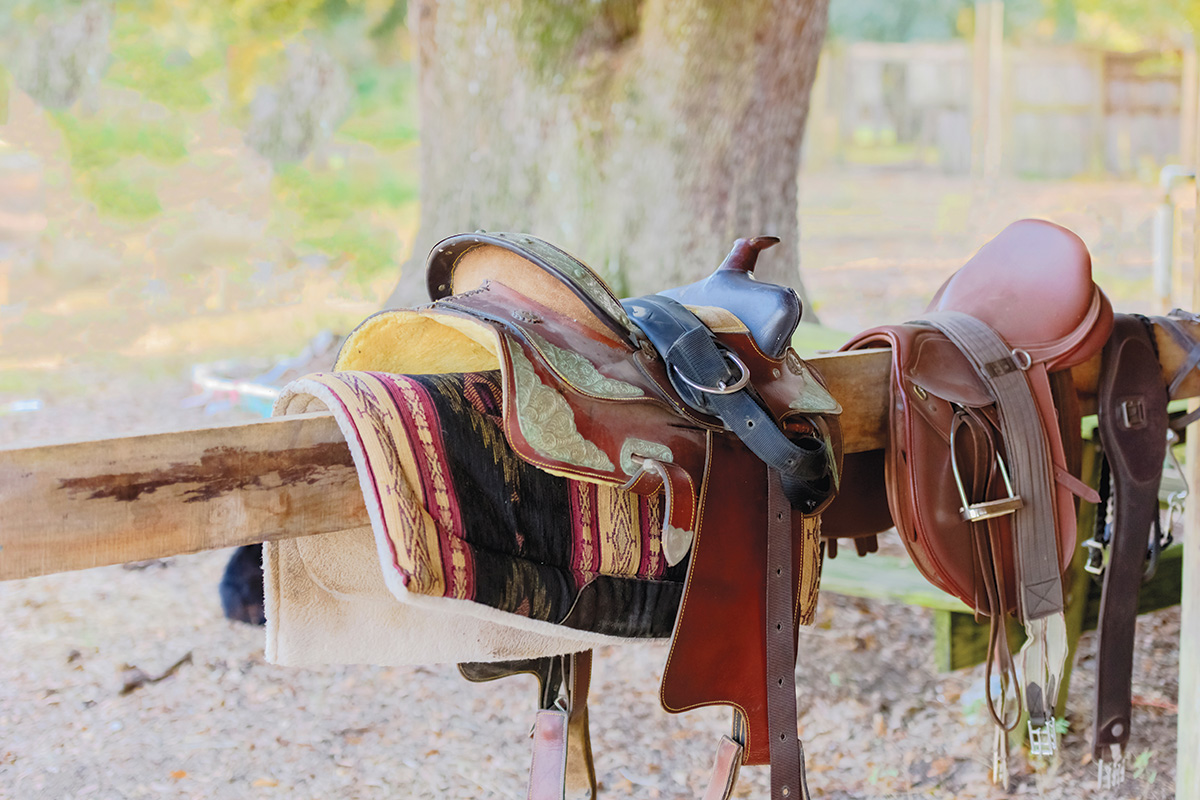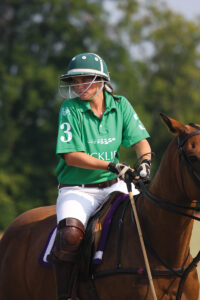The type of saddle you first sat in does not need to be your last. Changing riding disciplines can help you renew your interests and find new joy with the horses you love.

Here, we talked with three riders who made big switches. Read on to find out what prompted their shifts from ranch riding to dressage, eventing to reining, and western pleasure to polo.
Following the Feel
Growing up on a western cattle ranch taught Harrison to love horses. He searched for trainers and training styles that helped develop a connection and partnership with horses. He found that connection in the world of classical dressage.
“All the time I was growing up, it was all ranch work,” he says. Harrison helped to start his family’s young horses with round pen and desensitizing work.

Craving new training techniques, Harrison worked with a local western trainer who happened to be studying the principles of classical dressage. He found the connection he wanted with horses through dressage.
Harrison now rides and trains horses with classical dressage principles. His dressage mentor, Dominique Barbier, furthered Harrison’s love of his new discipline.
“There’s a mindset and a way of life with the classical principles to make sure the horse feels healthy and safe,” says Harrison. “There are western riders that have that mindset as well, but when I grew up starting horses, it was always physical. The horses were sweating, and they were disciplined if they didn’t do something as fast as I wanted. Now when I work with young horses, there’s not a day when they break a sweat. I have learned to go through the mind to get control of their body and feet to make sure that the horses feel more comfortable.”
Harrison says that as a rider, he finds the biggest switch in style is to use his seat more effectively.
“On the ranch, we used our legs and hands,” he says. “In the classical discipline, the seat is the primary aid. You shift your weight a little more and your legs and hands are used to clarify what your seat is doing.”

Dressage is a permanent switch for Harrison.
“I will stay with this style of riding,” he says.
“I feel like I’m done searching for something different. I am still searching for how to do things better and lighter.”
Harrison describes the moment he knew that he was on the right path in his horsemanship journey.
“I had someone coming to my facility to see if they wanted to put their horse in training,” he says. “Some family experiences were stressful, and I wasn’t mentally prepared to be riding. As I was getting my horse ready, I knew I couldn’t be there mentally today, and I needed [my horse] to be there for me. He could not have been any better. He was there for me and gave me his best and was consistent and made me look good. When I realized that I had that connection and that he could take care of me that way, it was a special moment.”
Change of Rein
Meg Johnson, now of Dallas, Texas, first sat in an English saddle at age 2. Her horse, Joker, carried her through the eventing ranks and earned her year-end titles with the Georgia Dressage and Combined Training Association. She even qualified for the North American Young Rider Championships. Later, a new horse, T’Kai, was her partner as she earned her United States Pony Club “B” rating.
An accident while riding T’Kai on a cross-country course prompted Johnson to rethink her riding.
“I looked like a human train wreck,” she says. Still, she was determined to ride and attended a horseman’s club meeting when starting at Auburn University in Alabama.

Her coach suggested stock seat classes, because she had a strong dressage background.
“After a few practices, I was slotted as our team’s open reiner,” says Johnson. “I loved the elegance of reining—it was like dressage, but with a sparkly shirt and some whooping and hollering! I was also introduced that year to rodeo pageantry, where I had to catch ride and run a reining pattern. I became Miss Rodeo Georgia the following year.”
After college, Johnson knew she wanted horses in her life—reining horses.
“I really never regained my ‘nerve’ after my accident in college,” she says. “I remember holding my baby in the hospital and knowing I couldn’t physically afford to take another fall now that I had someone depending on me. I started horse shopping from the hospital bed.”

Her first reining horse, Jac Smart, was a great horse to learn on—and she says she did have to learn the finer points of showing reining horses.
“I thought I’d read all the rules but had to be reminded that my sliding stops needed to be past the cones, not at the cones like a dressage test,” says Johnson. “I left the show with a disappointing score soaked in penalties. I also remember having a lot of trouble not using my reins; going from full contact in dressage to a looped rein in reining was a loss-of-control feeling that took some adaptation!”
Johnson found her horse of a lifetime in Timber Zak. She and Zak became a winning team.
“I’ll never forget the feeling of hearing my score announced over the loudspeaker and knowing we’d just become world champions,” she says. “It still gives me chills thinking about it. He’s carried me to several year-end titles, five buckles, and a run for Rookie of the Year.”
Johnson offers the following advice to any rider thinking of changing saddles.
“Figure out how to use your strengths from the previous sport—whether it’s your mental toughness, riding skills, or ability to adapt,” she says.
Pleasure to Polo

Nicole Wozniak grew up as a 4-H rider showing her horse Willie in western pleasure. The pair earned a revolving trophy and high honors at the state fair horse show.
Wozniak planned to stick with pleasure riding when she started at Michigan State University, but polo piqued her interest after the first equestrian team meeting.
“When I was walking out, someone said I should join the polo team instead,” she says. “I had been pretty burned out with horse showing in high school and the pressure to ‘win things.’ Polo sounded like a cool alternative. I attended tryouts that next week and I was instantly addicted.”
The new sport excited her and felt like a huge change from the horse show world.
“Polo is incredibly challenging,” she says. “The most exciting part was to not be judged anymore and to get to work with a team. Riding is just one aspect of the game. Hitting, knowing where your teammates are, knowing the rules, following plays, et cetera, were added elements that made things really interesting.”
Polo made Wozniak rework her horsemanship.
“In polo, getting out of your saddle to hit the ball is the No. 1 most important thing. For a while, I was constantly yelled at to ‘get out of the saddle!’ I think that was a product of my equitation background.”
After much practice, she felt like she toughened up mentally.
“At my final intercollegiate game at Regionals, I scored a two-pointer and brought our team within three goals of beating the best team in the nation,” says Wozniak. “The coach of the other team complimented our coach and told him how nervous our team had made him. This was huge coming from him! It was super exciting and a great way to end my intercollegiate career.”

Wozniak continues to ride. “But I can’t go back to the days of being judged against other people. The thrill of the team aspect of polo can’t be beat.”
After trying several disciplines, she says that her love of horses is the same no matter the sport or type of saddle.
“If riding isn’t fun anymore, a change of discipline can be a game changer. Sometimes changing up the discipline for your horse can be just as mentally helpful as changing it for you. If you do change, be kind to yourself. I used to always say that I changed disciplines in riding so many times that I was never able to get good at any one thing. Now I’ve realized that it has made me a more versatile rider, and I am able to do things in each discipline that a lot of people can’t.”
Changing disciplines just may invigorate your interest and teach you more about horses and riding. There’s always something new to learn.
This article about changing riding disciplines appeared in the October 2021 issue of Horse Illustrated magazine. Click here to subscribe!





